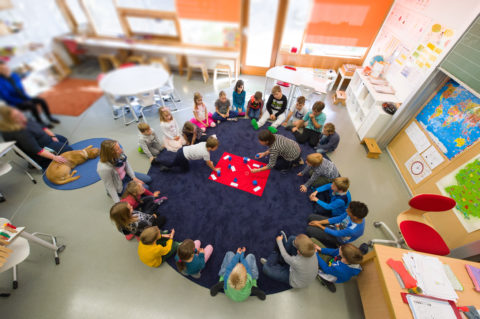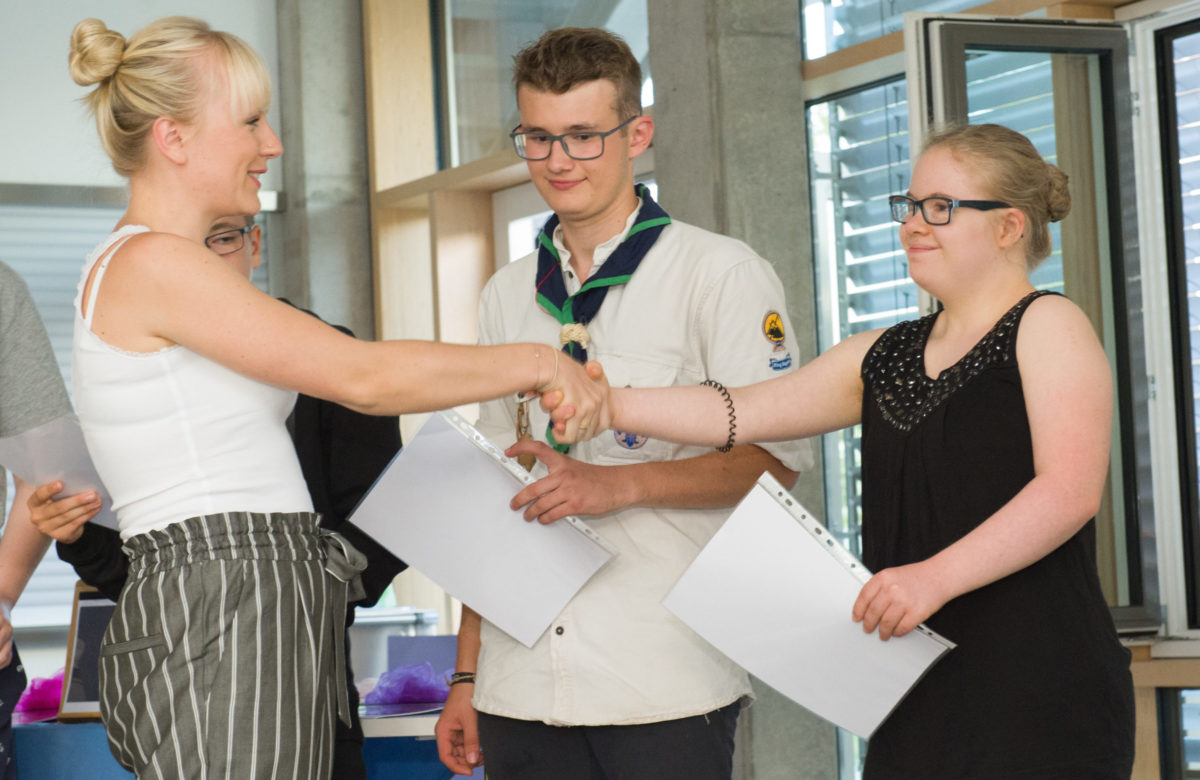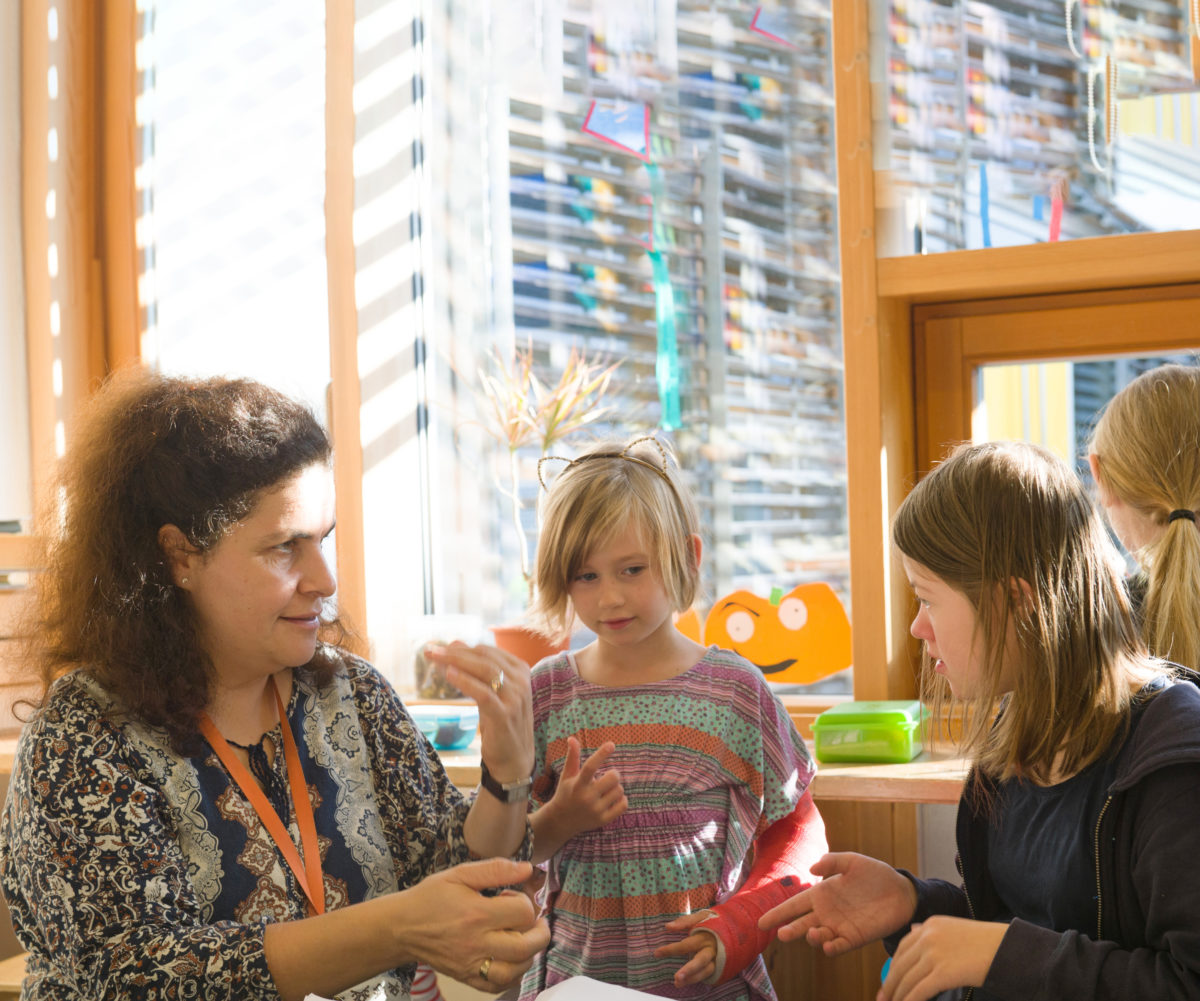The aim of our pedagogical work is that “children develop into differentiated thinking and respectfully acting adults. They should be able to live and develop in a self-determined way, as well as manage their everyday lives in all facets and live together in peace”. This is the Montessori promise of all schools and children’s houses of the Montessori Association of Northern Bavaria. This is a claim and an obligation for us. But how is this reflected in school life?
Our students show responsibility:
- for their work within the framework of self-organised learning
- for the class in the class council, in services, as godmother or godfather for the first graders or as class speakers
- for the community in the student forum, as dispute mediators or in the student council (SMV)
- for society in projects such as the Youth School or in campaigns such as Fridays for Future and the Plant for the Planet Academy
Inclusion
Physically or mentally handicapped children and teenagers live and learn together with all other students. This inclusion gives the pupils the chance to practise helpfulness at an early stage and to develop understanding and respect for the difference and special nature of people with disabilities. Depending on the stage of development and the type of impairment, a school assistant may be necessary in order to provide the inclusion child with optimal support and care. The feeling of appreciation and equality as well as diverse learning and development opportunities are positive aspects of inclusive education and lead to an increase in the child’s self-esteem and more independence.
The way in which the weak strengthen themselves is the same as the way in which the strong perfect themselves.
Maria Montessori
School of the generations
A soft whirring sound can be heard when the train travels through the modelled landscape and passes well-kept miniature houses. The sound, however, does not come from a hobby cellar, but from the workroom of our secondary school. A proud group of model railway fans meets there once a week, lays tracks, builds houses, takes care of the electrics and together they explore why and how it all works and can be designed.
What is special about this group? Our students are accompanied by passionate, experienced model builders who want to live out and share their childhood dream even in retirement. They are experts from the Herzogenaurach senior citizens’ office from the HerzoHeinzelmännchen group who support the children and teenagers on a voluntary basis and with great commitment. And when you observe the group, you see that young and old alike enjoy working together.
The joy of working together also gave rise to an idea for the computer project of the Orange class. The group explores the inner world of a computer and looks for answers to exciting questions like: What components are in computers? Which of them are absolutely necessary and which are dispensable? What function do they have? What is the difference between a tower and a laptop and why is it actually called so? And why are computers getting smaller AND more powerful at the same time?
While our students simply have fun working together with the senior citizens, the projects have another aim for the educators: to promote cohesion between the generations. Because in today’s world, the different generations of a family rarely live in close cooperation with each other. Diverse experiential knowledge and social skills are lost as a result. By opening the school to the outside world, the pedagogical concept of our school aims to involve senior citizens from the local area, retired employees of local companies, retired experts in science and technology and, of course, retired teachers and educators in the everyday life of the students within the framework of teaching projects. In doing things together, young and old experience an equal transfer of knowledge from life experience and modern perspectives. Our school thus becomes a place of joint learning, working and meeting – a school of the generations. This school of the generations is a permanent place of encounter where active seniors together with the students learn with and from each other.



